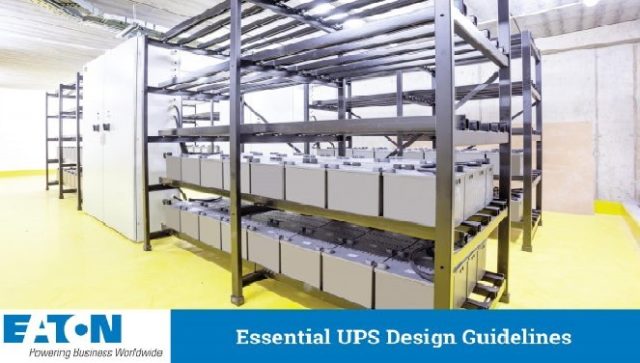Before you make any decisions on which UPS solution is best for your needs, it is essential to take UPS design into consideration. This is the best way to ensure that your chosen system will be able to work at an optimal level, within your current environment. UPS systems are not a one-size-fits-all solution in most cases. Each company has unique specifications, requirements and infrastructure that will greatly affect the design of UPS systems. In this guide, we share some of the top guidelines to consider when planning your UPS.

Covered In This Article
To get the most from your UPS, here are a few UPS design guidelines to keep in mind.
- Make sure there is a suitable electrical supply. This should be in close distance to the UPS. You can compare fuse ratings and breaker types to determine whether any electrical work is required, such as cabling, for example.
- Make sure you have the correct UPS dimensions. You will need to include battery cabinets that may be needed. It is vital that your installation space is large enough for the entire system to avoid overcrowding.
- Make sure that your UPS can be transported easily. This includes making sure that the system can be easily moved through your premises, fitting through doors, getting up or down any stairs and also fitting into existing racks.
- Make sure that floors are strong enough for full support. Remember that the UPS, as well as its battery cabinet, are both heavy. Your floor will need proper floor loading capacity to be sure that it can withstand additional pressure.
- Make sure that you have adequate ventilation in place. Climate control is a must and that means that your UPS will need proper ventilation to stay dry and cool. Do not install in a closed-off room or sealed container.
- Make sure that your connections are hardwired. This is handy if you want to distribute output through electrical panels. If no additional UPS fits your power requirements, hardwiring may be needed. Hardwired models need to be fitted by certified electricians, which can cost more.
- Make sure your system meets building codes. Finally, you will need to make sure that your UPS system can be installed according to specific building codes to avoid potential problems down the line with code violations.
Take these factors into account, and it will be a lot easier to find the UPS design that is best suited to your needs.
Learn how Eaton is powering businesses & homes everywhere and can help you setup a proper UPS system and infrastructure.


